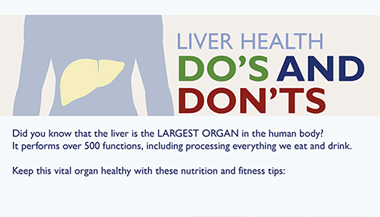Portal Hypertension Treatment
Portal hypertension is difficult to treat or cure. For that reason, your doctor will focus on preventing and managing complications and trying to reduce the pressure in your portal vein.
The main complication of portal hypertension is bleeding from the varices, and many of the treatment options aim to manage the bleeding.
Treatment options to manage portal hypertension and its complications:
- Medication
- Endoscopic therapy
- Shunting procedures
- Liver transplantation
Medication
If there are enlarged veins in your esophagus or stomach due to portal hypertension, physicians can treat it with medications to lower the pressure in these veins and prevent them from bleeding. Medications used to treat enlarged veins in the esophagus and stomach include:
- Beta blockers can be used to decrease portal pressure, although there are side effects. However, if you have cirrhosis but no varices, beta blockers cannot be used to prevent varices from developing. Studies have shown that the side effects of the medication outweigh the possible benefits.
- Octreotide decreases the splanchnic blood flow (blood flow in the gastrointestinal region) and can be used in a hospital.
Endoscopic Therapy
An endoscopy can treat gastrointestinal hemorrhage. There are a number of endoscopic treatments for this purpose:
- Banding: This is the preferred method to manage variceal hemorrhage. During an endoscopy, your doctor places small elastic rings over the vein. The rings block the blood supply to each varix. You will undergo the initial banding session and then return for subsequent sessions in order to completely obliterate the varices, which is usually achieved after four to five procedures.
- Balloon tamponade: This is done to control severe variceal bleeding through compressing the vein. We inflate a small balloon within your stomach or esophagus to apply pressure to the bleeding veins. This compresses and stops the bleeding. This is a complex procedure that should only be performed by experienced physicians.
- Transjugular intrahepatic portal systemic shunt: Please read about shunting procedures below.
Shunting Procedures
Shunting is another method of controlling acute bleeding. If you have had recurrent bleeding despite medical or endoscopic treatment, you may require either of the two methods of shunting:
- Nonsurgical transjugular intrahepatic portal systemic shunt (TIPSS): This procedure should only be performed by a doctor with a high level of expertise and experience. Your doctor will access the hepatic vein through the jugular vein and pass a needle through the liver into the portal vein. The vein is then dilated and a stent is put in place to keep the vein open.
- Surgical shunts: This is done to reduce the pressure in the portal vein, to maintain regular blood flow around the liver and to reduce (or not worsen) hepatic encephalopathy.
Liver Transplantation
Liver transplantation is the only effective treatment for cirrhosis and portal hypertension. Liver transplantation means your diseased liver is replaced with a healthy one from deceased donors or living donors who donate portions of the liver. The surgery is long and complex, requiring the removal and replacement of your body's largest solid organ. However, this option offers the highest survival rate and chance of complete rehabilitation.
Your doctor will discuss with you whether you are a candidate for liver transplantation and the steps you must take to be placed on the waiting list for a new liver.




